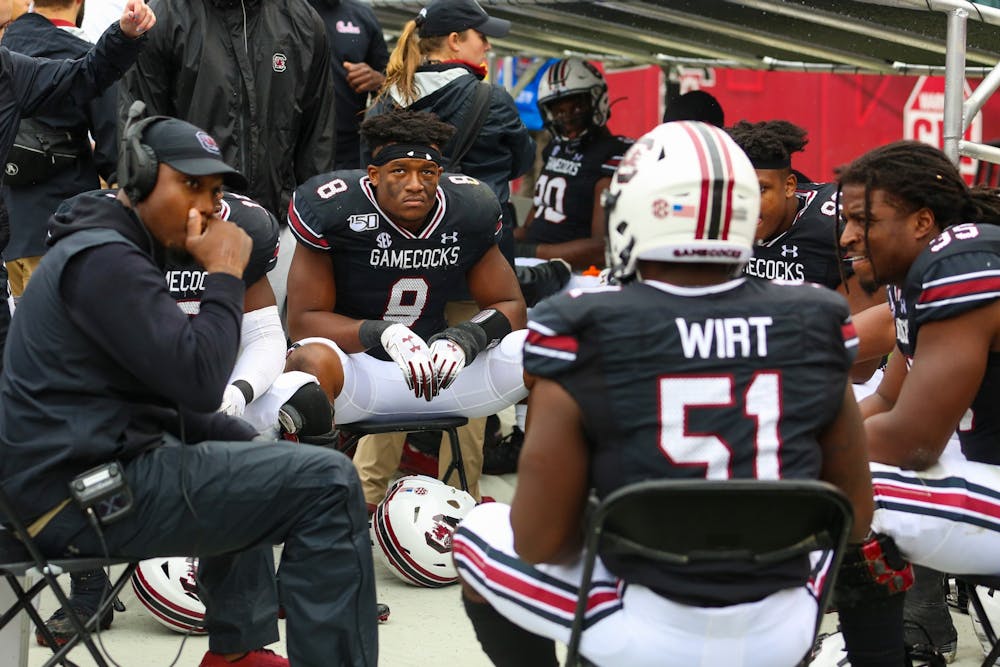The NCAA announced Tuesday that its board of governors voted unanimously to allow student athletes to be compensated for "the use of their name, image and likeness in a manner consistent with the collegiate model."
According to the NCAA’s official press release, the action “directs each of the NCAA’s three divisions to immediately consider updates to relevant bylaws and policies for the 21st century.” Each division is asked to create new rules beginning immediately but no later than January 2021.
The board laid out several guidelines within which this modernization should occur, including ensuring student athletes are treated similarly to non-athlete students, clearly distinguishing between collegiate and professional opportunities, affirming student athletes are not employees of the university and prohibiting inducements to attend or transfer to a specific institution.
The action does not specifically describe what compensation for use of a student athletes’ names, images and likenesses.
Professor Mark Nagel of the University of South Carolina's College Sport Research Institute has conducted extensive research on student athlete compensation. He also served as a consultant in the O’Bannon v. NCAA litigation, the case that started the conversation about use of college athletes’ names, images and likenesses.
In a phone interview, Nagel explained the potential effects the NCAA’s decision could have on college athletics.
“I’d like to see people who generate revenues have an opportunity to negotiate and bargain for the value of their efforts," Nagel said. "If this moves us in the direction where players who have value are able to maximize that value, I think that’s a good thing."
Nagel pointed out this decision can help athletes of non-revenue sports take advantage of the ability to use their name, image and likeness in small ways.
“I think it’ll be a good thing if a college tennis player can offer tennis lessons and get paid to do that, whereas right now, there’s a whole bunch of trickiness when we talk about various sports,” Nagel said. “Someone in the community wants their kid to learn how to play tennis, or how to swim, or how to throw a baseball, or whatever else, and a college athlete, oftentimes, has to be very, very careful how they go about doing that.”
For the big revenue-generating sports such as football and basketball, Nagel says it adds another layer to the recruiting process. It could also enable local sponsors to directly sponsor athletes rather than the school’s athletic department.
The most common concern Nagel hears is about “competitive balance and the rich getting richer.”
“I always have to remind people that the rich already are getting richer. There isn’t competitive balance,” Nagel said. “All that’s gonna change is that instead of all this money that goes to the SEC schools and the Pac-12 schools and the Big 10 schools ... some of it now will flow more effectively and efficiently, I think, to the athletes.”
Nagel also described how he thought compensation could impact what certain athletes determine is most important to focus on for themselves. He points out that not every player on the team will see the same level of sponsorship, which could drive some of them to decide to improve as an athlete in order to make more money from sponsorships.
It might also cause some of the athletes who don’t see as much playing time to be willing to take more advantage of the academic side of having a collegiate athletics scholarship.
Overall, Nagel said some people are worried this decision is going to dramatically change things, but he doesn’t agree. He thinks most fans are going to continue to care most about whether the team is performing well and whether the coaches are doing what they need to be doing.
“I think in many ways, this is a good thing,” Nagel said. “I don’t think that this is going to change college sport. I don’t think the sky is falling, as some people have said.”

